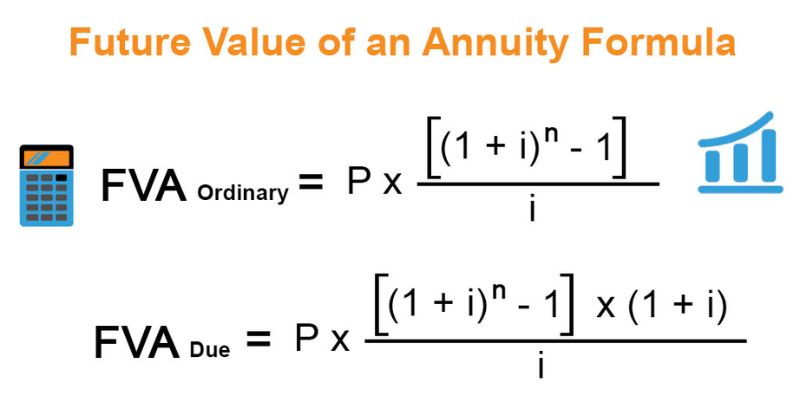Are Stocks With Low P/E Ratios Always Better?
Aug 11, 2024 By Rick Novak
Do you ever find yourself perplexed when analyzing stocks? Do all the acronyms and ratios feel overwhelming and complicated? Don't fret! One of the most important ratios to consider when investing in stocks is the price-to-earnings ratio or P/E for short.
It can help you quickly gauge a company's current valuation. But while it may seem like low P/E Stocks are always better, that isn't necessarily true.
In this article, we’ll discuss what a price-to-earnings ratio is, how to determine if a stock has a favorable P/E ratio versus an unfavorable one, and explain why investing solely based on stock prices with low P/Es isn’t wise.
Price-to-Earning (P/E) Ratio
How much investors are willing to pay for each dollar of a company's earnings is determined by its price-to-earning (P/E) ratio. It is determined by dividing the stock price at the moment by the earnings per share over the previous 12 months (sometimes known as the trailing 12 months, TTM). The stock is seen as being more costly the higher the P/E ratio.
Are Stocks With Low P/E Ratios Always Better

In short - no, stocks with low P/E ratios are sometimes better than those with higher ratios. The P/E ratio should only be used to compare companies in the same sector and make informed investment decisions. It’s important to look at other factors, such as growth prospects and the company’s financial health when comparing stocks with different P/E ratios.
For example, a stock with a low P/E might appear more attractive than a competitor in the same industry, but if the company has poor growth prospects or is heavily leveraged, it might not be a good investment. Similarly, a stock with a high P/E ratio may have strong growth prospects and be well-run, making it an attractive option despite its higher price.
It is important to remember that the P/E ratio should only be used as one tool among many when assessing a company’s potential for investment returns. A thorough analysis of a company’s financial health and market position will better indicate the risks associated with investing in that stock.
It is also important to remember that P/E ratios can be affected by factors such as investor perception, macroeconomic conditions, and accounting practices. Therefore, consulting an experienced investment professional before making investment decisions is always advisable.
Stocks with low P/E ratios are sometimes better than those with higher ones. Investors should use this ratio judiciously and look at company size, financial health, sector performance, and growth prospects when deciding which stocks to invest in. An experienced professional can help identify the best investments for any particular situation.
Investing wisely can yield good returns and help achieve long-term goals. Researching and consulting a qualified financial advisor can make all the difference in realizing those dreams.
Comparisons Are Necessary
When considering stocks with low price-earnings (P/E) ratios, it is important to remember that such stocks may not always be the best investment. While a low P/E ratio indicates strong potential for growth and profitability in the future, other metrics must also be considered before making any investment decision. It is, therefore, necessary to compare stocks with similar low P/E ratios to determine which provides the most value.
Factors To Consider

A few key factors should be considered when comparing stocks with low P/E ratios. These include the company's market capitalization, dividend yield, and current liquidity position.
Additionally, it is important to consider how long the company has been in business, its profitability history, and any current or potential legal issues it may face. These factors should be weighed against one another to determine which stock is the best investment option.
Risks Involved
Investing in stocks with low P/E ratios carries certain risks that must be considered before making any investment decision. For example, low P/E stocks may be more volatile than the overall market and have a higher risk of becoming undervalued over time.
Additionally, some companies may have unsustainable business models that could lead to financial losses in the future. Therefore, performing extensive research on any stock before investing is important.
The Bottom Line
When analyzing stocks, it is important to consider the price-to-earnings (P/E) ratio. Low P/E stocks have the potential for strong returns in the future, but other metrics should also be considered before making any investment decision.
Certain risks associated with investing in low P/E stocks must be carefully evaluated. A qualified financial advisor can help investors make informed decisions and maximize their returns.
With the right research and due diligence, investors can identify stocks with low P/E ratios with good long-term growth potential to realize their financial goals.
FAQs
Does a low PE ratio mean a stock is undervalued?
A low P/E ratio does not always mean that a stock is undervalued. It could be due to weak fundamentals or an unfavorable outlook for the company’s industry. Investors should analyze other metrics and consider the condition of the overall economy before investing in stocks with low P/E ratios.
What is a good P-E ratio for a stock?
The answer to this question will depend on the type of stock and its industry. Generally speaking, a P/E ratio between 15 and 25 is considered in the "fair value" range for most stocks. However, some industries may have higher or lower ranges. Understanding the context is important before determining whether a certain P/E ratio is good or bad.
Is a high PE ratio always good?
No, a high P/E ratio does not always indicate that a stock is good. A high P/E ratio could be due to overly optimistic market expectations or inflated prices due to investor speculation. Before investing in stocks with high P/E ratios, investors should conduct thorough research and analysis of the company’s fundamentals and industry outlook.
Conclusion
The price-to-earnings ratio is an important analytical tool available to investors to help them make informed decisions about stock purchases. P/E ratios of multiple stocks provide some context and insights about their respective markets and relative prices compared to similar stocks. Investors need to understand what P/E ratios are, how they work, and what a good or bad ratio may be to help with the decision-making process regarding stocks.
Nevertheless, investors should note that a low P/E ratio doesn’t always mean a good buy and vice versa; there could be any number of underlying reasons behind this data that can hardly be identified just by looking at the numbers. So while P/E ratios can be helpful guideposts in formulating investment decisions, investors still need further due diligence before investing in stocks with low or high P/Es.

Total Enterprise Valuation (TEv): Definition, Calculation, Uses

Student Discounts: A Comprehensive Guide

What Do You Need To Know About Cards?

Charting the Richest Amazon Shareholders of 2023: Who's Leading the Pack?

Which Industries Have the Highest Inventory Turnover?

What Is a Joint and Survivor Annuity?

Calculating Present and Future Value of Annuities

Trinity Debt Management Review

What Is Cost-Volume-Profit (CVP) Analysis?

